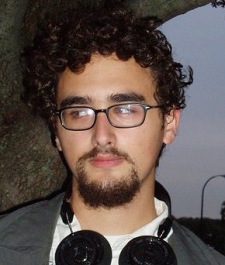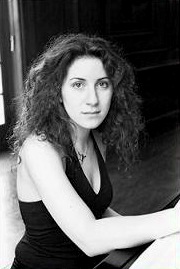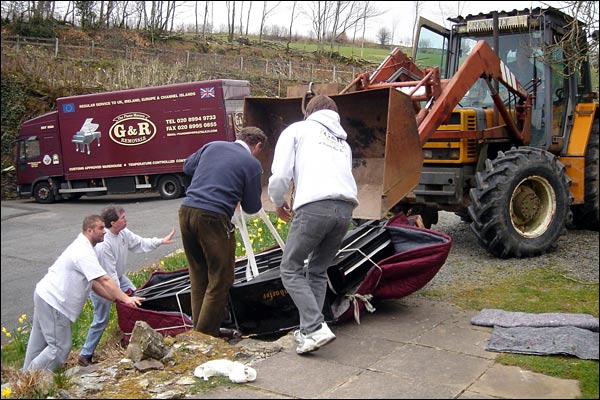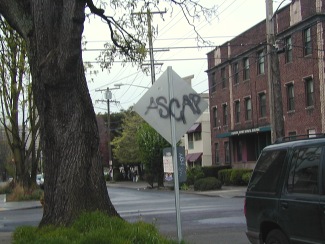Many apologies for going silent for several weeks (I just KNOW you’ve been losing sleep without this column). Without giving excuses, I’ll move right along to three recordings you may not hear about anywhere else:
 Mark Zuckerman
Mark Zuckerman
New Music for Strings
Seattle Sinfornia; Joel Eric Sueben
Momenta Quartet
(MSR Classics 1223)
Much of Mark Zuckerman’s music is infused with dance figures and folk melodic ideas, and makes us of titles in Hebrew and stories from the Old Testament. One such work, Out of the Wilderness, is a five-movement “symphony” based on a passacaglia and is “a metaphor for the continuing trek of eth Jewish people…” The Seattle Sinfonia performs well, but I must complain about the editing in track 5. A very poor splice is clearly evident at about 1:08, where the music “skips.” This isn’t something one should expect from a commercial release.
Two short, tonally centered works, Shpatsir (Yiddish for “stroll”) and Theme Song, are light interludes between the heavier fare.
The final work, a string quartet, provides for interesting listening, if the sound editing, again, weren’t so obvious. The fake reverb and echo is so apparent in the first few seconds, you can almost see Garage Band. This is nothing against Mark Zuckerman’s work, but I am unhappy with MSR Classics’ product.
 Norman Dello Joio
Norman Dello Joio
Two Concert Etudes
Music for Piano Trio “The March of Folly”
Sonata for Piano
Garrick Ohlsson
Ani Kavafian, Carter Brey, and Jeremy Denk
(Bridge 9220)
There are occasions when twenty-three minutes of music comes together in the last three minutes, as though to say “The moral of the story is…” Justin Dello Joio’s Piano Trio “The March of Folly” (inspired by Barbara Tuchman’s book of the same name) achieves such a climax (or anti-climax) in its Epilogue after twenty minutes of angst and anger. It is an optimistic finale, but one that doesn’t overshadow the message of its predecessor movements. Ani Kavafian (violin), Carter Brey (cello) and Jeremy Denk (piano) offer a compelling and powerful performance.
Garrick Ohlsson frames the trio with performances of two solo piano works, both tremendously difficult and complex. The music is often angular, interspersed with sweeping romantic gestures: One moment in the sonata is almost Lisztian.

New Music for Electronic and Recorded Media
Women in Electronic Music 1977
(New World Records 80653-2)
I like to read magazines from back to front. So, I listened to this CD from the last track to the first, causing a kind of aural time travel through electronic music.
The last two works by Laurie Anderson (b. 1947) are from 1977, and are short portraits of people: A New York artist (New York Social Life) and an art museum guard (Time to Go). In New York Social Life, Laurie Anderson plays two characters, one “live” and the other prerecorded on a telephone, accompanied by Scott Johnson on a tambura. This pre-Sex and the City diary-entry is humorous, and would be fun to see live. Time to Go depicts a museum guard telling people, well, “It’s time to go.” Once again, Laurie Anderson, singing and playing the violin, is accompanied by Scott Johnson on guitar and organ.
Ruth Anderson’s (b. 1928) Points from 1973-74, is a static sound journey using sine tones. Megan Roberts (b. 1952) was next (moving backwards) with I Could Sit Here All Day (1976) for drums, electronics, and screaming voices. Insane-asylum sound environment meets hypnotic drumming pattern.
Appalachian Grove I (1974) was Laurie Spigel’s (b. 1945) first composition of computer-generated tape music after studying the GROOVE programming system. Spiegel’s love for the banjo, fiddle playing and the plectra are explored through electronic sounds that evoke modes and gestures found in Appalachian music.
Pauline Oliveros (b. 1932) makes an appearance with Bye Bye Butterfly from 1964. It was created at the Tape Music Center studio. New Zealand-born Annea Lockwood (b. 1939) created World Rhythms in 1975 from sounds found in the environment (pulsars, earthquakes, human breathing, etc). A live gong is played throughout the performance and, when performed live lasts between thirty-nine to ninety minutes. This recording offers an eight minute version.
Johanna M. Beyer (1888-1944) created one of the first pieces of electronic music in 1938 (!) and called it Music of the Spheres. The premiere performance took place in 1977, at the Cabrillo Music Festival, given by Allen Strange who realized the score for this recording. It comes from a larger work for theatre called Status Quo and represents Beyer’s feelings of injustice during her days. A friend of Percy Grainger and a student of Henry Cowell, she was and still is largely unknown today. This recording features The Electric Weasel Ensemble.
 I started composing when I was 11, on a family trip to Italy. My earliest influence was Bach, and after that, Hindemith, Prokofiev and Bartók. When I was 15 I discovered rock (by means of “Strawberry Fields Forever” and “I Am The Walrus”), and when I was 17 I discovered the experimental rock underground (by means of The Olivia Tremor Control, Kukl, Mr. Bungle and Thinking Plague). Those two discoveries got me interested in combining ideas from the scored-music world and ideas from the rock world, and since then I’ve been exploring various ways of bringing disparate materials together — not just rock and scored music, but really anything. I got my BA at Yale in 2005, and am currently working towards my MA at the University of Michigan, where I’m studying with Erik Santos.
I started composing when I was 11, on a family trip to Italy. My earliest influence was Bach, and after that, Hindemith, Prokofiev and Bartók. When I was 15 I discovered rock (by means of “Strawberry Fields Forever” and “I Am The Walrus”), and when I was 17 I discovered the experimental rock underground (by means of The Olivia Tremor Control, Kukl, Mr. Bungle and Thinking Plague). Those two discoveries got me interested in combining ideas from the scored-music world and ideas from the rock world, and since then I’ve been exploring various ways of bringing disparate materials together — not just rock and scored music, but really anything. I got my BA at Yale in 2005, and am currently working towards my MA at the University of Michigan, where I’m studying with Erik Santos. Lainie and Alex were at Yale together, and they share a lot of the same anything-goes spirit. She received her BA in music from Yale in 2004, studying with John Halle, Matthew Suttor, and Kathryn Alexander. She also snagged a second BA in Near-Eastern languages and civilizations, specializing in the religious chant traditions of the middle east. She studied Torah cantillation with Rebecca Boggs and Quranic chanting with Dr. Abd al Hamid. If I’ve got it right, she’s currently teaching at St. Ann’s School in Brooklyn.
Lainie and Alex were at Yale together, and they share a lot of the same anything-goes spirit. She received her BA in music from Yale in 2004, studying with John Halle, Matthew Suttor, and Kathryn Alexander. She also snagged a second BA in Near-Eastern languages and civilizations, specializing in the religious chant traditions of the middle east. She studied Torah cantillation with Rebecca Boggs and Quranic chanting with Dr. Abd al Hamid. If I’ve got it right, she’s currently teaching at St. Ann’s School in Brooklyn.
 Mark Zuckerman
Mark Zuckerman Norman Dello Joio
Norman Dello Joio
 Spotted this morning across the street from my place here in Seattle. I hear the BMI bangers are tagging all the dumpsters south of Pike Street. Looks like a war is coming…
Spotted this morning across the street from my place here in Seattle. I hear the BMI bangers are tagging all the dumpsters south of Pike Street. Looks like a war is coming…